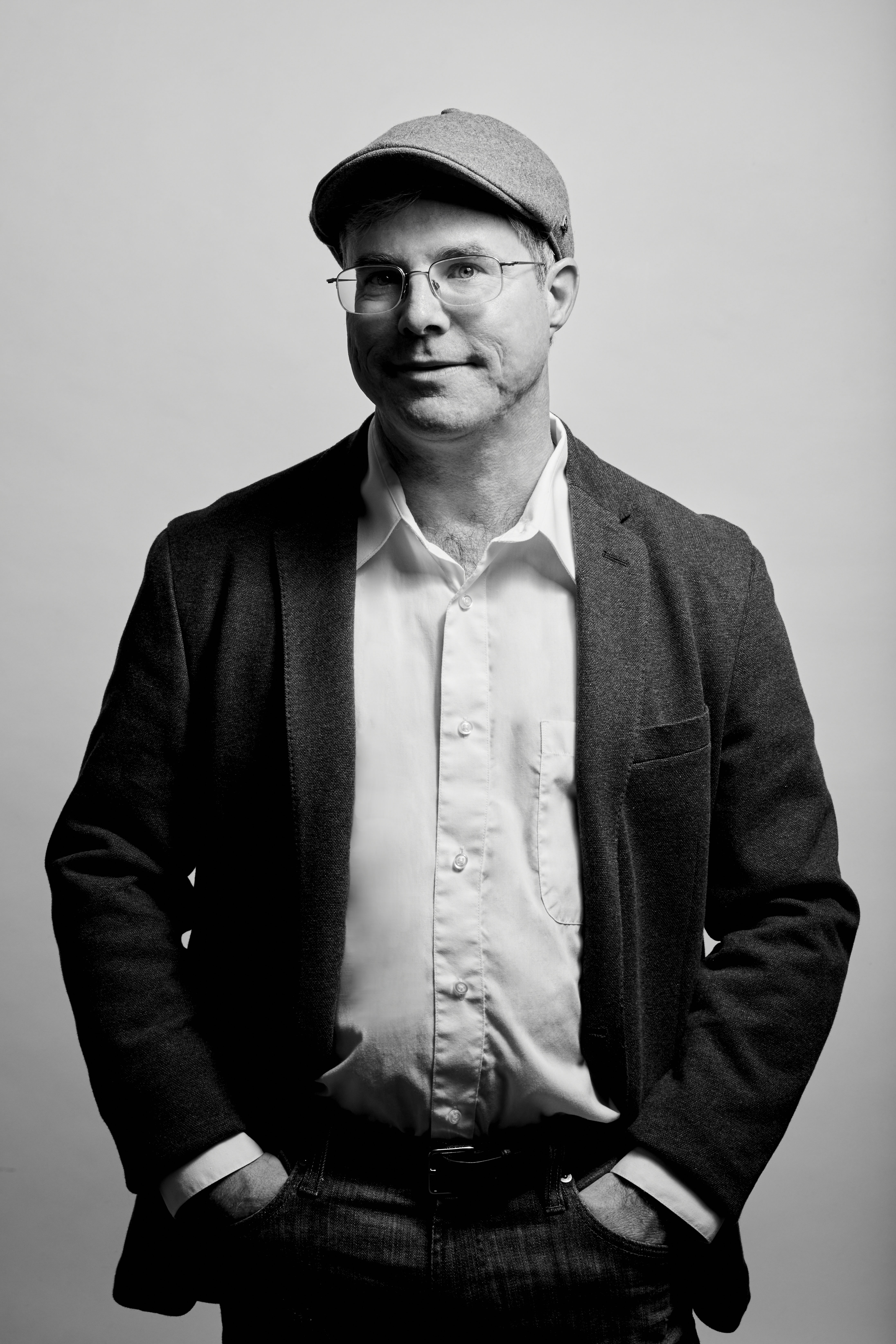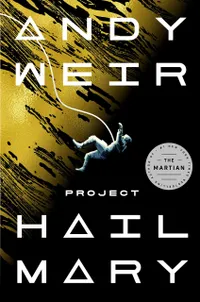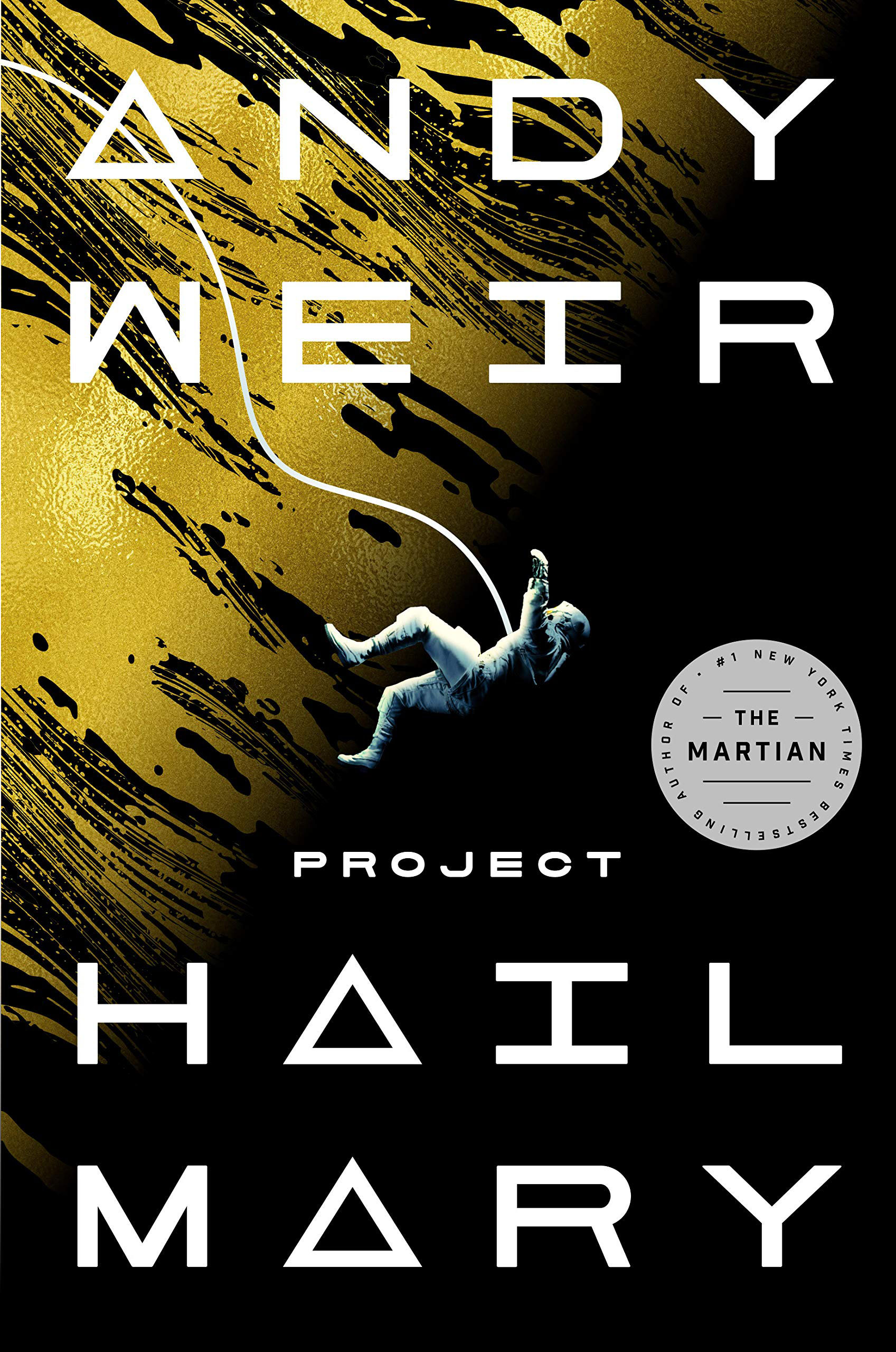Exclusive: 'The Martian' author Andy Weir aims for the stars with new sci-fi thriller 'Project Hail Mary'

New York Times bestselling author and self-proclaimed science geek Andy Weir, who struck publishing gold with his debut novel, "The Martian" (Crown, 2014), and its moon-centric follow-up "Artemis" (Crown, 2017), has slipped the surly bonds of Earth once more for his new first-contact thriller, "Project Hail Mary" (Ballantine Books, 2021).
This epic journey of discovery surrounding a lone astronaut attempting to rescue Earth from an extinction-level threat mines unexplored veins of science fiction and features Weir's ultra detailed style and imaginative storytelling.
The plotline finds middle-school science teacher Ryland Grace as the sole survivor of a last-chance interstellar mission to the Tau Ceti system to save the planet from a frigid death. He awakes from hypersleep aboard the Hail Mary spaceship suffering from extreme amnesia. Grace can't even recall his own name or occupation, let alone why he’s in space millions of miles from home with two long-dead corpses as his only companions.
As his memory slowly resurfaces, the realization of his desperate task is revealed. Left alone on a small craft that's been pieced together by an international assembly of space agencies around the globe, he must use his wits, courage, and imagination to contain a dire scenario for humanity. With a little luck and an unlikely encounter with an alien species, Grace just might succeed.
Related: Author Andy Weir offers 'Project Hail Mary' mission patch on virtual book tour
Project Hail Mary by Andy Weir (Ballantine Books, 2021). $18 at Amazon
From the author of "The Martian" comes a new adventure by a lone astronaut with a mission to save Earth from certain doom in space.

"Project Hail Mary" has already been purchased by MGM for a film adaptation to be directed by Phil Lord and Chris Miller ("The Lego Movie"), with Ryan Gosling signed on to star as reluctant astronaut Ryland Grace. Lord and Miller are also attached to direct Weir's lunar crime caper novel, "Artemis."
Space.com spoke with Weir on the genesis of this interstellar odyssey, dropping down the rabbit hole for some deep research, reining in the narrative's nerdier scientific data, and becoming a producer on the upcoming Hollywood film adaptation linked with Gosling's involvement. This Q&A has been edited lightly for length and clarity.
Breaking space news, the latest updates on rocket launches, skywatching events and more!
Space.com: Can you launch into a speed run of the "Project Hail Mary" plot and the main threat that propels the story?
Andy Weir: The plot is presented as a guy who wakes up aboard a spaceship. He has some idea of who he is and why he's there, and through a series of flashbacks as he's getting his memory back you find out what's been going on on Earth. Basically the sun is getting dimmer and there's a microscopic, single-celled organism that's an interstellar lifeform that lives on the surfaces of stars. It breeds and then spores out to other nearby stars. It's breeding out of control and we're basically having an algae bloom on the sun. Now these little critters are consuming so much of the sun's energy that Earth is in danger of extinction as the solar output goes down.
This organism they call astrophage, which is Greek for "a thing that eats stars." So they breed it up and use that as a fuel for propulsion. And the reason they do this is they notice that all other regional stars are getting dimmer, except for Tau Ceti. For some reason nobody understands, Tau Ceti is unaffected, so they need to figure out what makes it immune and how can they duplicate that to save humanity. So they make an interstellar ship called the Hail Mary and power it with astrophage and send people out into space.
Space.com: It feels like you had a lot of fun writing "Project Hail Mary." How was the evolution and process different from composing "The Martian" or "Artemis?"
Weir: Usually when I'm writing a book it comes from me speculating on something scientific. "The Martian" came from me speculating on how could we do a humans to Mars mission and how do we make sure they don't die if something goes wrong, and what if a bunch of things go wrong. "Artemis" started with me speculating on what humanity's first city that's not on Earth will be like. Will it be in low-Earth orbit, on the moon, or is it going to be on Mars? Then I ended up designing the city of Artemis, figuring out why anyone would build a city there, what the economy is like and what business is like.
For "Project Hail Mary," I was writing a different book between "The Martian" and "Artemis" called "Zhek." I wrote like 70,000 words over the course of a year and then realized the book just wasn't working. It sucked. The plots weren't coming together. The characters weren't interesting.
So I gave up on it and back-burnered it. But I kept thinking there were some cool aspects to the story that I shouldn't just throw away. One of them was this notion of a spacecraft fuel that had the maximum possible specific impulse, which is the efficiency of a spacecraft fuel. And this stuff has the theoretical best specific impulse. To be able to turn matter into light and then shooting that light out the back of your ship to use as propulsion, because light has momentum. So we're talking about monumental amounts of energy.
I was thinking about all the cool things you could do with that technology and the story that would become "Project Hail Mary." Also, one of the main characters in "Zhek" was a woman who had this tremendous amount of secret authority. She could tell governments what to do but nobody knew it. I took her and brought that into "Hail Mary" as well. It felt good. Once I got all the pieces together you can just set the plot rolling and enjoy writing it. Plus it's a book about friendship, so it feels good and has some humorous dialogue.
Space.com: How far down the rabbit hole did you descend while researching this novel?
Weir: I went way down that rabbit hole! I keep everything as real as possible. I mean, we do have extraterrestrial life, but even that I have an explanation for. All the physics and science in there is real, including relativistic physics. Like the ship he's on, it got to Tau Ceti in about 13 years from Earth's point of view, but only about four years from the crew's point-of-view because of time dilation. All that stuff is lots of fun for a dork like me to do a deep dive on.
I also went into how an organism could live on the surface of a star, how does it store energy, and can you turn energy into mass and turn it back? So that's where the hand-wavy physics comes from. I made up some quantum physics stuff that we have not yet discovered. This lifeform, astrophage, evolves to take advantage of this quirk that allows it to turn heat energy into neutrinos and allows it to store neutrinos, something any particle physicist says is functionally impossible.
Space.com: How do you balance out the ultra-detailed science for geek readers and a general audience unfamiliar with the more technical aspects?
Weir: That's a tricky thing to do. I really like real science and I'm enthusiastic and excited by it and I want the reader to feel the same way. I'll end up with these plots where you have to know a certain amount of this science to understand the plot at all. I know I have to explain this much about the science to the reader and no more. I'd love to just talk about the science all day but the reader doesn't want that. When I'm doing my research I'll use just a tiny percent of all the stuff I find and the math I do.
I ran all the numbers for astrophage. I figured out exactly how much energy it needs to survive interstellar distances. I worked out how much energy it's losing due to blackbody radiation. I went way down the rabbit hole. Lots of fun stuff like that. I'm not attempting to educate anyone on anything. I just feel like there's a lot of unexplored story and plot potential to be told in real science. What I've found is that readers will forgive you for any amount of exposition if it's funny. If you make them laugh while you're explaining it, they're fine with it.
Space.com: Ryan Gosling is attached to star in MGM's feature adaptation of "Project Hail Mary." What were your casting reactions and will you be involved in the production?
Weir: Yeah, I'm pretty excited by that, obviously. MGM bought the rights from me outright, not optioned, which generally means the studio is taking things seriously. Even what to me is a huge sum of money, to a studio is a pittance. And we have Drew Goddard working on the screenplay, and he's the one who wrote the Academy Award-nominated screenplay for "The Martian."
I'm excited about Ryan, too. He's pretty stoked and we've spoken on the phone a few times and he's thrilled with the idea of being able to play a character who's actually got a personality. He often gets put in these roles where his job is to stare sadly out a window. But this one he gets to be proactive, maybe a little insecure, more than just a quiet person where he's basically told to not to express any emotion or personality of any kind.
I feel very confident it will be a good movie if it gets greenlighted, but you never know if a production house is actually going to make it happen. You've got to be lucky and good. I am happy to help with the screenplay as I did with "The Martian" for general info and technical questions. I don't know if Drew's started on the script yet. He's a real busy guy.
Also, I'm a producer on this project and the main thing that entails for me is that I'll get front-end gross. Everyone bidding on the book was told that's what I wanted and MGM told me, "We don't do that for writers, but we do it for producers, so why don't you be a producer?" So in terms of actual producer stuff I'm just trying to stay out of the way of the real producers.
Andy Weir's "Project Hail Mary" is available now from Ballantine Books.
Follow us on Twitter @Spacedotcom and on Facebook.

Jeff Spry is an award-winning screenwriter and veteran freelance journalist covering TV, movies, video games, books, and comics. His work has appeared at SYFY Wire, Inverse, Collider, Bleeding Cool and elsewhere. Jeff lives in beautiful Bend, Oregon amid the ponderosa pines, classic muscle cars, a crypt of collector horror comics, and two loyal English Setters.


